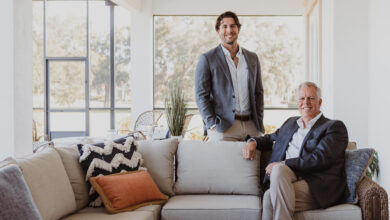 As a tourist attraction, Silver Springs’ history goes all the way back to the 1870s when visitors from across the country made the artesian spring and surrounding waters a mandatory stop when traveling through Florida. Its status in those days has led many to tab Silver Springs as the state’s first commercial tourist attraction.
As a tourist attraction, Silver Springs’ history goes all the way back to the 1870s when visitors from across the country made the artesian spring and surrounding waters a mandatory stop when traveling through Florida. Its status in those days has led many to tab Silver Springs as the state’s first commercial tourist attraction.
Although Silver Springs may have attracted tourists, it was not until locals Carl Ray and W.M. “Shorty” Davidson partnered to lease much of the land around the springs in 1924 that the area took off as a major tourist attraction. What Ray and Davidson did was add a modern flair and promotion to the park by adding gas engines to the glass bottom boats, opening the “Ross Allen Reptile Institute” and adding other zoological displays and attractions.
Originally, the plan was quite grandiose, with two golf courses, a couple hotels, sanitarium and even an airport as part of the vision. But when the Florida real estate boom busted, the major developments were later scaled back.
In developing the Silver Springs park, Ray played the role of businessman while Davidson handled the promotional schemes. Their business acumen helped shepherd the park through the years of the Great Depression and the attraction flourished despite the country’s economic hardships.
Ray was born in Lake Park, Ga., then moved with his family in 1895 to Martel, west of Ocala. There, he became assistant superintendent of the Martel Lumber Company before enlisting in the Army in 1917 and serving as a first lieutenant in France.
After the war and upon joining forces with Davidson to develop Silver Springs, Ray was at various times a sawmill operator, contractor and builder. He was also director of Commercial Bank for 40 years.
Davidson was born in 1885 in Georgia, but spent most of his life in Marion County. He operated a café at Union Station in Ocala and became a very popular local figure with his 10-gallon hat and huge curved-stem pipe that he smoked. The image was what one might expect from a promoter and during his life Davidson did not fail to disappoint.
He fought for the designation of major federal highways through Ocala and was the main reason that at one time four major U.S. highways (27, 41, 301 and 441) passed through downtown Ocala.
The transformation of Silver Springs under Ray and Davidson continued to accelerate into the late 1950s with the construction of the Silver Springs’ Tourist Center which included historic shops and a boat dock which exists to this day. Silver Springs had all the accoutrements of the modern tourist attraction and was notable throughout the world.
To promote Silver Springs, Ray and Davidson embarked on campaigns rather unusual for their time. Throughout the Southeast, they would nail signs on trees that said, “See Silver Springs” and would erect billboards on southbound highways in the U.S. promoting the park. Trucks with dioramas of Silver Springs toured the country and bumper stickers became a big part of advertising.
When Ray and Davidson sold the attraction to ABC-Paramount in 1962, annual attendance at the park was around 1.5 million tourists and was the most visited tourist destination in Florida.
A few weeks after the sale, Davidson unexpectedly passed away, and Ray would die in 1966 at the age of 72. Their legacy remains with the Silver Springs park, now under control of the state of Florida, still welcoming visitors with its natural beauty and glass bottom boats. That legacy was recognized in 2016 when Ray and Davidson were both posthumously inducted into the Florida Tourism Hall of Fame. In a way, they may be said to have invented the tourism industry.






